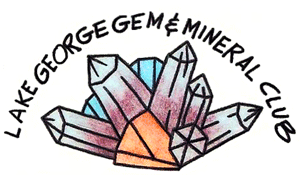By
Jack Shimon
My “fossil Grandpa” took me to visit this neat site when I was in Texas last summer. We drove away from Austin to a small rural community where it seemed there wasn’t anything to find. My Grandpa pointed me to a small trail, full of flowers that Jane stopped to admire, which eventually led down a steep trail into the river bed. This was definitely not a popular hiking trail and I doubt many people except geocachers have been to this spot. The site is an Earthcache which is a type of geocache that teaches you about a unique geoscience feature. I have been to several Earthcaches in Texas and in at least four other states (Colorado, Iowa, North Carolina and Florida) and learned some interesting lessons. Our job was to study the dinosaur tracks and answer some questions (1).
.
 |
| Jane and I at the dinosaur tracks. We are each standing by a footprint. Photo credit: Julie Shimon |
 |
| Photo credit: Julie Shimon |
| Next I had to measure the length of one footprint. I measured several and took the average to be 18 inches long. |
 |
Photo
credit: Julie Shimon
Then I calculated the hip height, which equals five times the print length, or 5x18 inches, which is 90 inches. My hip measures only 30 inches high.
|
Next I calculated the length of the dinosaur, which is ten times the print length, or 10x18 inches, which is 180 inches. I am only 52 inches long but I also don’t have a tail like a theropod.
|
 |
| The tape measure indicates the length from head to end of tail. |
The final task was to determine if the dinosaur was walking, trotting, or running. To do this you divide stride length by hip height, which is 112/90 = 1.244. I first guessed that it was walking because the prints were so clear and there was no smudging. Was I right?
Yes, I guessed correctly! For the calculation stride length divided by hip height the following values correspond to motion: less than 2.0 is walking, 2.0 to 2.9 is trotting, and greater than 2.9 is running.
I had a lot of fun at the Earthcache with my Grandpa and enjoyed learning how to interpret dinosaur tracks. As we were exploring some more he showed me these interesting layers. The thick hard white layers are deep water limestone deposits. The thin bedded gray layers in between are shallow water mudstones. The dinosaur tracks were found at the base of the lower mudstone layer.
 |
Photo
credit: Julie Shimon
|
References:
1. Track Meet? Cache GC1RZM5 by Waterweasel & Tygress
About the author: Jack Shimon is a member of the Pikes Peak Pebble Pups in Colorado Springs, and is in the Colorado Springs Mineralogical Society Unit. He is in 3rd grade and also enjoys cub scouts, mountain biking and playing the drums. He is always conducting research on Earth science topics either through science or art.




.jpg)